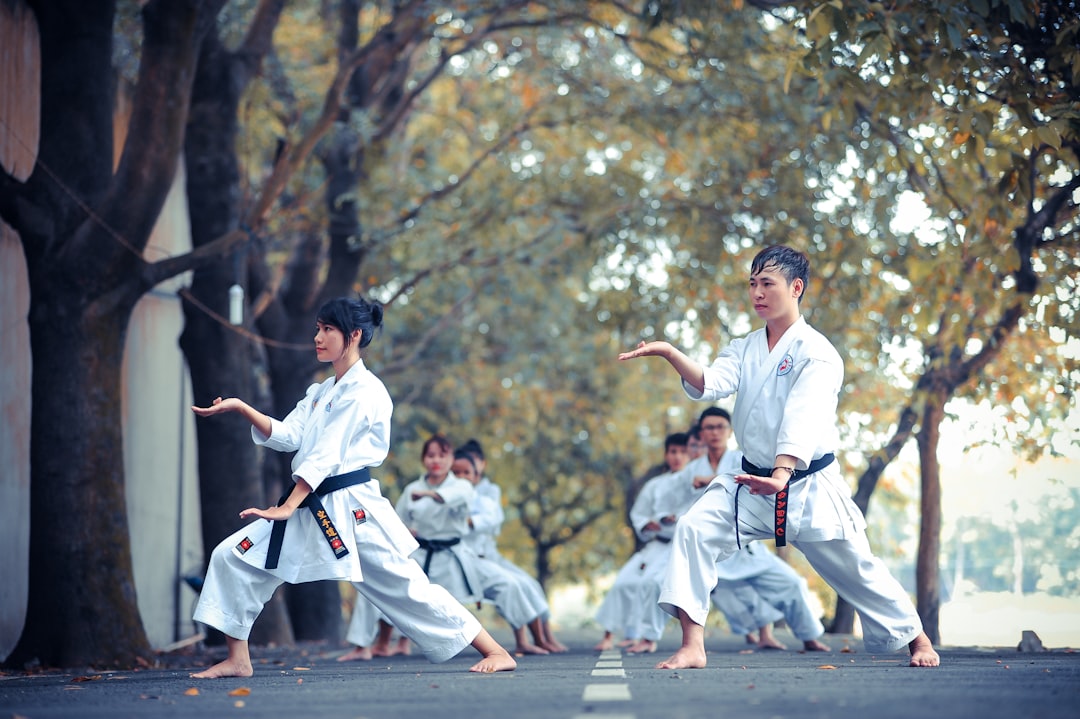The article section provides a detailed explanation of the specific terminology and characteristics of karate suits, known as keikogi or simply gi. Unlike other martial arts uniforms, the karate gi is designed to accommodate the unique movements of karate, crafted from durable materials such as heavy cotton or hemp, and includes a jacket with short or long sleeves and straight-legged trousers held by a belt that indicates the wearer's rank. The evolution of the karate gi reflects its cultural significance, originating from Okinawan farm jackets in the 19th century and evolving into the standard white cotton suit recognized globally. Selecting a karate suit requires attention to comfort, quality, fit, and traditional standards—cotton or hemp being preferred for their durability and breathability. The gi should be neither too tight nor too loose, allowing for full motion while maintaining its shape, and is typically white to symbolize purity and humility. Opting for a reputable brand within the karate community ensures that the gi supports your technique and honors karate tradition and etiquette.
explore the essential elements of traditional martial arts attire, our article delves into the specifics of what is colloquially referred to as a karate outfit. From its origins to its modern iterations, we uncover the term’s authentic meaning and significance within the discipline. Whether you’re a seasoned practitioner or a curious newcomer, understanding the evolution and variety of karate suits—often termed ‘karate gi’—is key to embracing the full experience of this dynamic practice. Join us as we guide you through selecting the perfect gi for your training needs.
- Unveiling the Terminology: What Is a Karate Suit Called?
- The Evolution and Significance of the Karate Gi
- Choosing Your Gi: Factors to Consider in Selecting a Karate Suit
Unveiling the Terminology: What Is a Karate Suit Called?

When delving into the world of martial arts, one may find themselves curious about the specific terminology used within this discipline. A common question among those new to karate is, “What exactly is the term for a karate suit?” The attire worn by practitioners during training and competition in karate is distinct from other martial arts uniforms. Known as a “keikogi” or “gi” in Japanese, this garment is tailored specifically for the movements and techniques unique to karate. It consists of a jacket and trousers, typically made of heavy cotton or hemp fabric, designed to withstand the rigors of sparring and training. The jacket, which reaches just past the waist, features either short or long sleeves and is secured by buttons or snap fastenings. The trousers are straight-legged and usually held up by a belt, signifying the rank of the wearer. So, whether you’re attending a karate class or watching a tournament, the practitioners’ uniforms are their “keikogi,” an essential part of their training and a symbol of their dedication to the art of karate.
The Evolution and Significance of the Karate Gi

The karate suit, often referred to as a gi, has a rich history and has evolved significantly over time. Originally, practitioners of karate wore attire similar to everyday clothing; however, as the martial art formalized, the need for a standardized uniform became apparent. This led to the development of the modern gi, which is now an iconic part of karate culture worldwide. The gi serves not only as a uniform but also as a symbol of discipline and respect for the tradition and its practice. It consists of a jacket, trousers, and a belt, with colors signifying the wearer’s rank or level of expertise.
The evolution of the karate suit can be traced back to the Okinawan farm jackets of the 19th century, which were adapted for use in martial arts training. These early gis were simple and functional, designed to allow for ease of movement during practice and competition. Over time, the design of the gi was standardized across different karate styles, with the introduction of a white cotton fabric becoming the most common material due to its availability and durability. Today, the karate gi continues to be an essential component in both training and competition, reflecting the discipline’s historical roots while accommodating modern practices. Does the traditional karate suit have any regional variations, and how has its design contributed to the practice of karate? The traditional karate suit indeed has regional variations, with slight differences in cut, fabric choice, and ornamentation that can be attributed to local customs and availability of materials. These variations do not alter the functional aspects of the gi but rather add a layer of cultural significance. The design of the karate gi contributes to the practice by providing a standardized attire that is both practical for movement and symbolic of the martial artist’s dedication to the art.
Choosing Your Gi: Factors to Consider in Selecting a Karate Suit

When selecting a karate suit, also known as a gi, it’s crucial to consider several factors to ensure both comfort and appropriateness for the discipline. Firstly, the material of the gi is a significant aspect; high-quality cotton or hemp is traditionally preferred due to its durability and breathability, which are essential for a comfortable training experience. Does the fabric feel sturdy yet lightweight? Will it allow you to move freely during practice? Additionally, the fit of the gi should align with your body type and movement needs; a snug yet not overly tight fit is ideal as it allows for ease of motion without compromising on the structure of the garment. Are the sleeves and pant legs at an appropriate length to neither hinder your movements nor be a distraction during practice?
Another aspect to consider is the color of the gi. White is the most common and preferred choice in traditional karate schools, symbolizing purity and humility. Does the white gi adhere to the standards of your dojo or style of karate? Furthermore, while selecting a gi, it’s worth considering the brand’s reputation within the martial arts community. Do reputable karate practitioners endorse this brand? Remember that the best gi for you is one that meets both your personal preferences and the expectations of your training environment. How does the brand stand up in terms of longevity and quality among karateka? By carefully evaluating these factors, you can choose a gi that not only supports your technique but also respects the tradition and etiquette of karate.
In wrapping up our exploration of this traditional martial arts attire, it’s clear that the karate suit, or “gi,” is more than mere clothing—it represents the dedication and discipline inherent to the practice. From its origins to the myriad options available for today’s practitioners, understanding what a karate suit is called and how to choose one that suits your needs is essential for any martial artist. Whether you’re an experienced karateka or just beginning your journey, selecting the right gi is a significant step in honoring the tradition and personalizing your practice.
